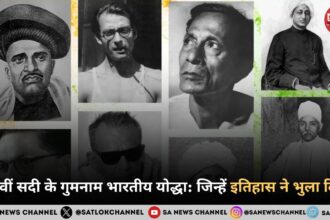The history of the British monarchy spans over a thousand years, from medieval rulers to the modern constitutional era. Explore key monarchs, pivotal events, and the evolution of this enduring institution
The History of the British Monarchy
The British monarchy is one of the oldest and most enduring institutions in the world. With a history spanning over a thousand years, it has witnessed countless transformations, from medieval feudalism to modern constitutional rule. This article delves into the fascinating history of the British monarchy, exploring its evolution, significant monarchs, and key historical events that have shaped the institution.
Key Points about the History of the British Monarchy
1️⃣ Ancient Origins – The monarchy traces its roots to early medieval kingdoms, with King Egbert (827–839) being the first recognized King of England.
2️⃣ Norman Conquest (1066) – William the Conqueror’s victory at the Battle of Hastings reshaped England, introducing feudalism and a strong central monarchy.
3️⃣ Magna Carta (1215) – King John’s signing of this historic document limited royal power and laid the foundation for constitutional governance.
4️⃣ Tudor & Stuart Eras – Henry VIII’s religious reforms and Elizabeth I’s golden age transformed England, while the Stuart period saw the Civil War and the Glorious Revolution (1688), leading to constitutional monarchy.
5️⃣ Modern Evolution – The monarchy transitioned from imperial rule under Queen Victoria to a constitutional institution, with Queen Elizabeth II modernizing the royal family and King Charles III continuing its legacy in the 21st century.
The Origins of the British Monarchy
The roots of the British monarchy trace back to the early medieval period, with various kingdoms existing across what is now England, Scotland, and Wales. The unification of these territories laid the foundation for the monarchy we recognize today.
The Anglo-Saxon Era (827–1066)
The first recognized King of England was Egbert of Wessex, who reigned from 827 to 839. Under his rule, England began to take shape as a unified kingdom. The Anglo-Saxon period saw the rise of influential rulers such as Alfred the Great (871–899), who defended England against Viking invasions and promoted education and legal reform.
■ Also Read: British Raj: India’s Transformative Journey from Colonial Rule to Independence
However, the monarchy was constantly under threat from external forces, particularly the Vikings, who seized control of parts of England. The Anglo-Saxon dynasty ultimately came to an end in 1066 with the Norman Conquest.
The Norman and Plantagenet Dynasties (1066–1485)
The Norman Conquest (1066)
One of the most significant turning points in British history was the Battle of Hastings in 1066, where William the Conqueror defeated King Harold II. William became the first Norman King of England and introduced feudalism, centralizing power in the hands of the monarchy.
The Plantagenets and the Rise of Parliamentary Power
- The Plantagenet dynasty (1154–1485) saw some of England’s most famous rulers, including:
- Henry II (1154–1189): Strengthened royal authority and established the jury system.
- King John (1199–1216): Forced to sign the Magna Carta in 1215, which limited royal power and laid the groundwork for constitutional government.
- Edward I (1272–1307): Conquered Wales and attempted to subdue Scotland.
- Richard III (1483–1485): The last Plantagenet king, defeated by Henry Tudor at the Battle of Bosworth Field, marking the start of the Tudor dynasty.
The Tudor and Stuart Monarchs (1485–1714)
The Tudor Dynasty (1485–1603)
The Tudors transformed England into a major European power. Their rule saw religious upheaval and the expansion of royal authority.
Henry VIII (1509–1547): Famous for his six marriages, Henry VIII broke from the Catholic Church and established the Church of England.
Elizabeth I (1558–1603): The “Virgin Queen” presided over the Elizabethan Golden Age, defeating the Spanish Armada in 1588.
The Stuart Era and the English Civil War (1603–1714)
The Stuarts faced significant challenges, particularly conflicts between the monarchy and Parliament.
James I (1603–1625): Advocated the divine right of kings, leading to tensions with Parliament.
Charles I (1625–1649): His disputes with Parliament led to the English Civil War (1642–1651), ending with his execution and the temporary abolition of the monarchy.
The Restoration (1660): The monarchy was restored with Charles II, but tensions between the crown and Parliament remained.
The Glorious Revolution (1688): James II was overthrown, and William III and Mary II took the throne, agreeing to a constitutional monarchy with the Bill of Rights (1689).
The Hanoverian and Victorian Eras (1714–1901)
The Hanoverian Dynasty (1714–1901)
The 18th and 19th centuries saw Britain emerge as a global superpower through colonial expansion and industrialization.
George I (1714–1727): The first Hanoverian king, he relied on ministers due to his limited English proficiency, strengthening the role of the Prime Minister.
George III (1760–1820): Lost the American colonies in the American Revolution (1775–1783) but expanded British influence in India and Australia.
Queen Victoria (1837–1901): Her reign, known as the Victorian Era, was marked by industrial growth, imperial expansion, and cultural transformation.
The Modern Constitutional Monarchy (1901–Present)
The Windsors and the 20th Century
The House of Windsor, established in 1917, navigated two world wars, decolonization, and the modernization of the monarchy.
King George V (1910–1936): Led Britain through World War I (1914–1918) and changed the royal family’s name from the House of Saxe-Coburg and Gotha to Windsor.
King Edward VIII (1936): Abdicated the throne to marry Wallis Simpson, leading to his brother George VI (1936–1952) becoming king.
Queen Elizabeth II (1952–2022): The longest-reigning monarch in British history, she witnessed immense social and political change, guiding the monarchy into the modern era.
The Monarchy in the 21st Century
After Queen Elizabeth II’s passing, King Charles III ascended the throne in 2022. The modern monarchy faces challenges such as public scrutiny, discussions on republicanism, and the evolving role of the Commonwealth.
Conclusion
The history of the British monarchy is a testament to its resilience and adaptability. From medieval kings to constitutional figures, the monarchy has played a crucial role in shaping Britain’s political and cultural identity. As it moves forward in the 21st century, it continues to evolve while maintaining its historical significance.
The British Monarchy and the Eternal Kingdom of God:
From a spiritual perspective, Sant Rampal Ji Maharaj teaches that worldly monarchies, including the British monarchy, are temporary institutions governed by material desires and power structures. While history has witnessed the rise and fall of great kingdoms, true peace and justice can only be found through devotion to the Supreme God, Kabir Saheb.
The British monarchy, once an absolute ruling power, has evolved into a constitutional institution, reflecting the transient nature of worldly dominance. However, Sant Rampal Ji emphasizes that no human authority, no matter how influential, can bring true justice or eternal happiness. The scriptures confirm that material wealth, royal status, and global influence are fleeting, while spiritual realization is everlasting.
In today’s world, where the monarchy faces scrutiny and change, Sant Rampal Ji urges people to turn towards true spiritual knowledge rather than relying on human governance. The ultimate purpose of life is not to uphold dynasties but to seek salvation through the true path of devotion prescribed in the scriptures. Just as past empires have faded, the British monarchy too will change, but the eternal kingdom of the Supreme God remains unshaken, offering liberation to those who follow the true spiritual path.
Sant Rampal Ji Maharaj is revealing the hidden truth of our scriptures and guiding humanity toward the real purpose of life—attaining salvation (Moksha). Those who wish to break free from the endless cycle of birth and death should take shelter in the true Guru and adopt the path of Satbhakti. The golden opportunity to connect with the Supreme God is here. Don’t let worldly illusions hold you back—explore the true spiritual path today by listening to Sant Rampal Ji Maharaj’s discourses and reading the sacred scriptures under His guidance.
FAQs About the British Monarchy
1. Who was the first King of England?
King Egbert of Wessex (reigned 827–839) is considered the first King of England, as he unified several Anglo-Saxon kingdoms under his rule.
2. Why is the Magna Carta important in monarchy history?
Signed in 1215 by King John, the Magna Carta limited the power of the monarchy and laid the foundation for constitutional governance in England.
3. What was the significance of the Glorious Revolution (1688)?
It marked the shift to a constitutional monarchy when James II was overthrown, and William III and Mary II accepted parliamentary limits on royal power.
4. How did Queen Elizabeth II modernize the monarchy?
Her reign (1952–2022) saw the monarchy adapt to social change, embrace media engagement, and strengthen ties with the Commonwealth.
5. What role does the British monarchy play today?
The monarchy is now a constitutional institution, with the King serving as a ceremonial head of state while political power rests with the government.









